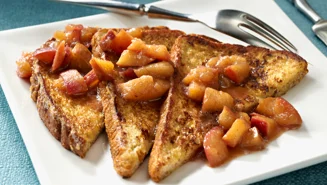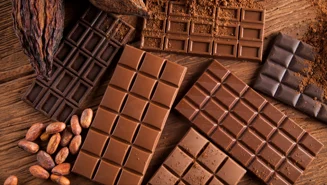
It is not possible to claim a cheese is ‘high-lactose’, as there is no definite rule about lactose levels in cheese. However, some varieties have quite high levels compared to other varieties, for example, soft and fresh cheeses compared to hard and matured ones.
Is cheese high in lactose?
Some cheeses are higher in lactose than others, while others are so low, they only have trace amounts. The content varies depending on the type of milk used, the production process, and the length of ageing.
Although it is not a universal rule, many tend to consider cheeses with a lactose level over 3 %, in other words, 3 grams per 100 grams, as comparatively high in lactose since most cheeses typically range from 0 % to 3-4 %.
But it is not always that easy; the content can change for each cheese in question depending on, for example, the brand, and the ageing, offering different possibilities of the same product.
If you are interested in cheeses with a lower lactose content, for example, parmesan, cheddar, and Swiss cheese, you can check out our chart of lactose levels in cheese.
Which cheese has the highest lactose level?
It is difficult to name one cheese as having the highest level as it can change for each type depending on various factors.
Check out our chart beneath to see the lactose content in different cheeses. In general, fresh cheeses have the highest levels compared to other varieties, usually, about 3-5 %. This is the case as they are not aged long like, for example, cheddar, parmesan, and gouda. This means soft and fresh cheeses retain more lactose, giving them a higher lactose level.
| Cheese | Lactose content (per 100 grams) |
|---|---|
| Cream cheese | 4-4.6 grams |
| Mascarpone | 3.5-4 grams |
| Quark | 3.3-4.5 grams |
| Ricotta | 3.2-5.1 grams |
| Cottage Cheese | 3-4 grams |
| Queso Fresco | 2-5 grams (can vary widely) |
| Paneer | 1.2-3.2 grams (can vary widely) |
| Queso Blanco | 1-5 grams (can vary widely) |
Remember the lactose-free variants – easy to make, easy to enjoy
Nowadays, almost any type of cheese can be produced with few to no traces of lactose. Generally, the enzyme lactase is added to a cheese concentrate to break down lactose, also called milk sugar, into simpler sugars – glucose and galactose – during the ageing process. The simpler sugars are consumed by bacterial cultures and converted into lactic acid.
The process at Arla includes an additional step where we filter the milk through an ultrafiltration plant to create a milk drink to use for the concentrate. The result? Different lactose-free cheeses with the same delicious flavour as their regular counterparts.
Explore some of the most popular cheeses in their lactose-free version. For instance, learn more about flavourful lactose-free cheddar, creamy lactose-free brie, or lactose-free cream cheese perfect for baking and cooking. With so many delicious options out there, everyone can find a cheese they love.










































